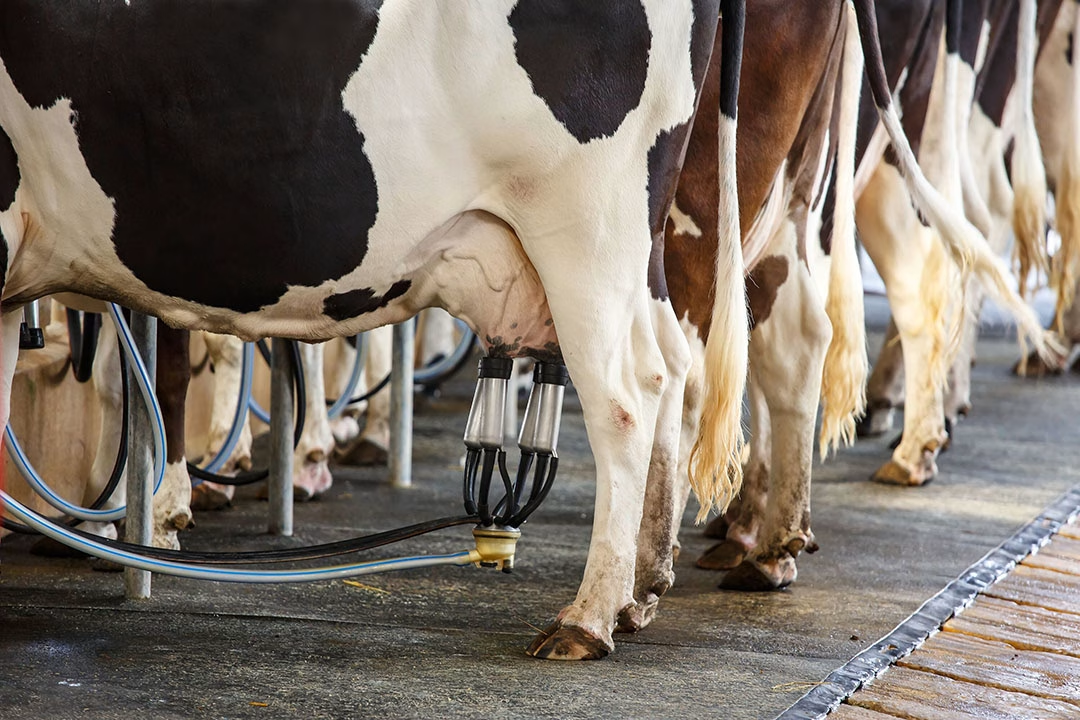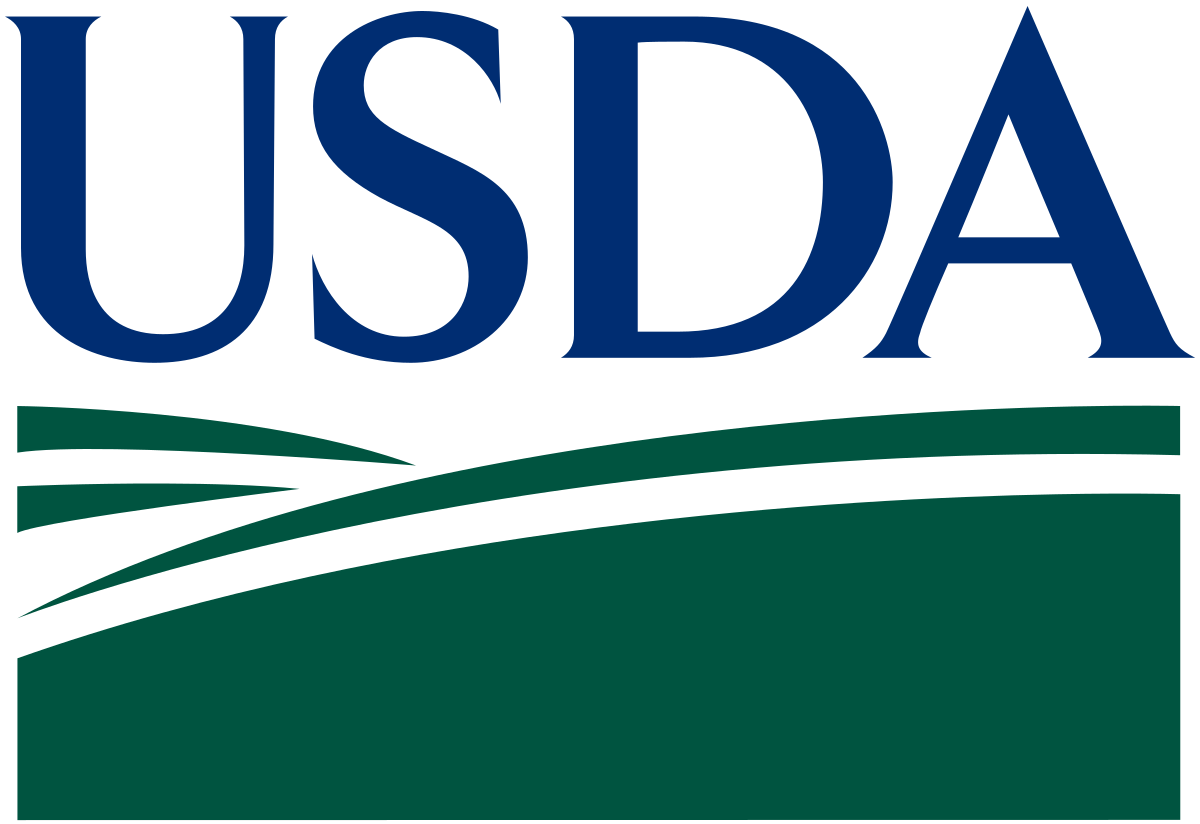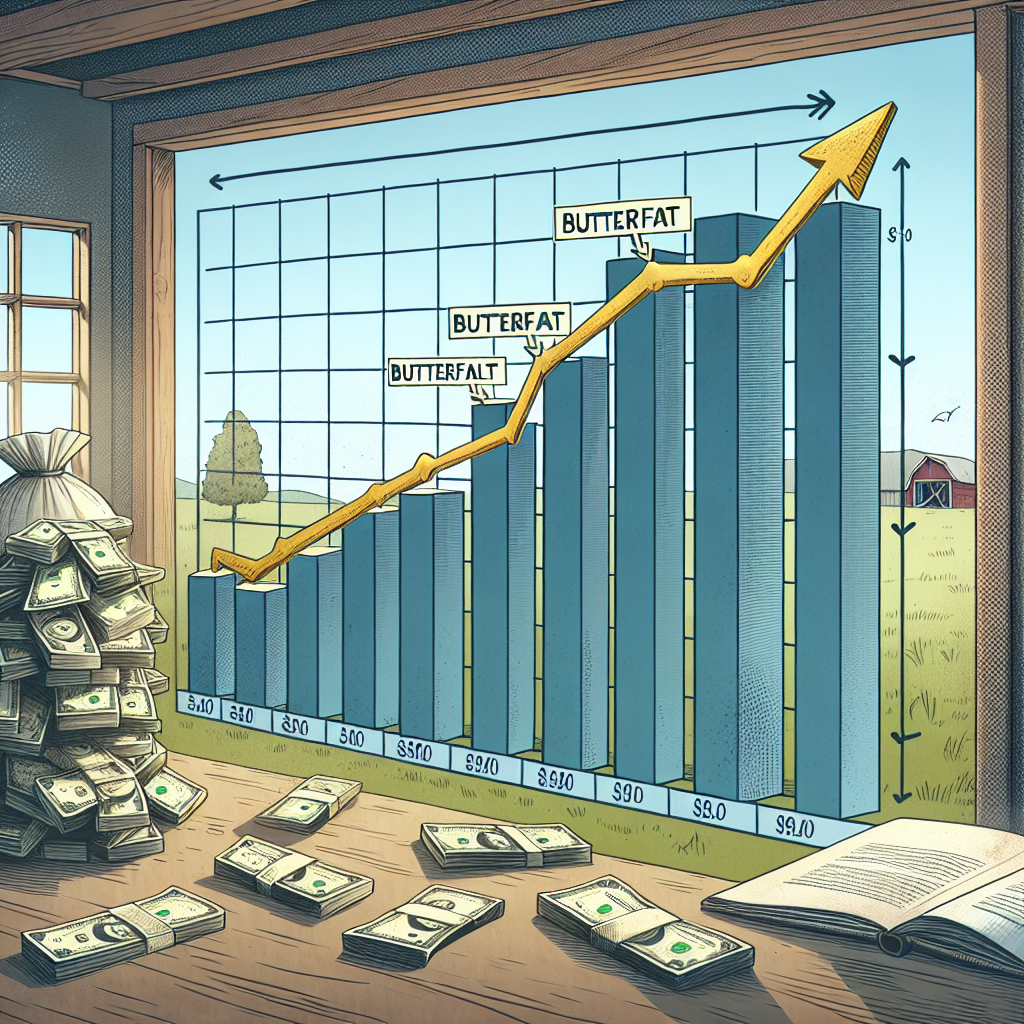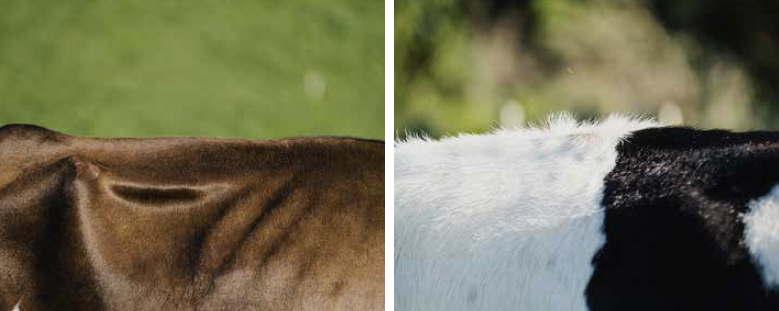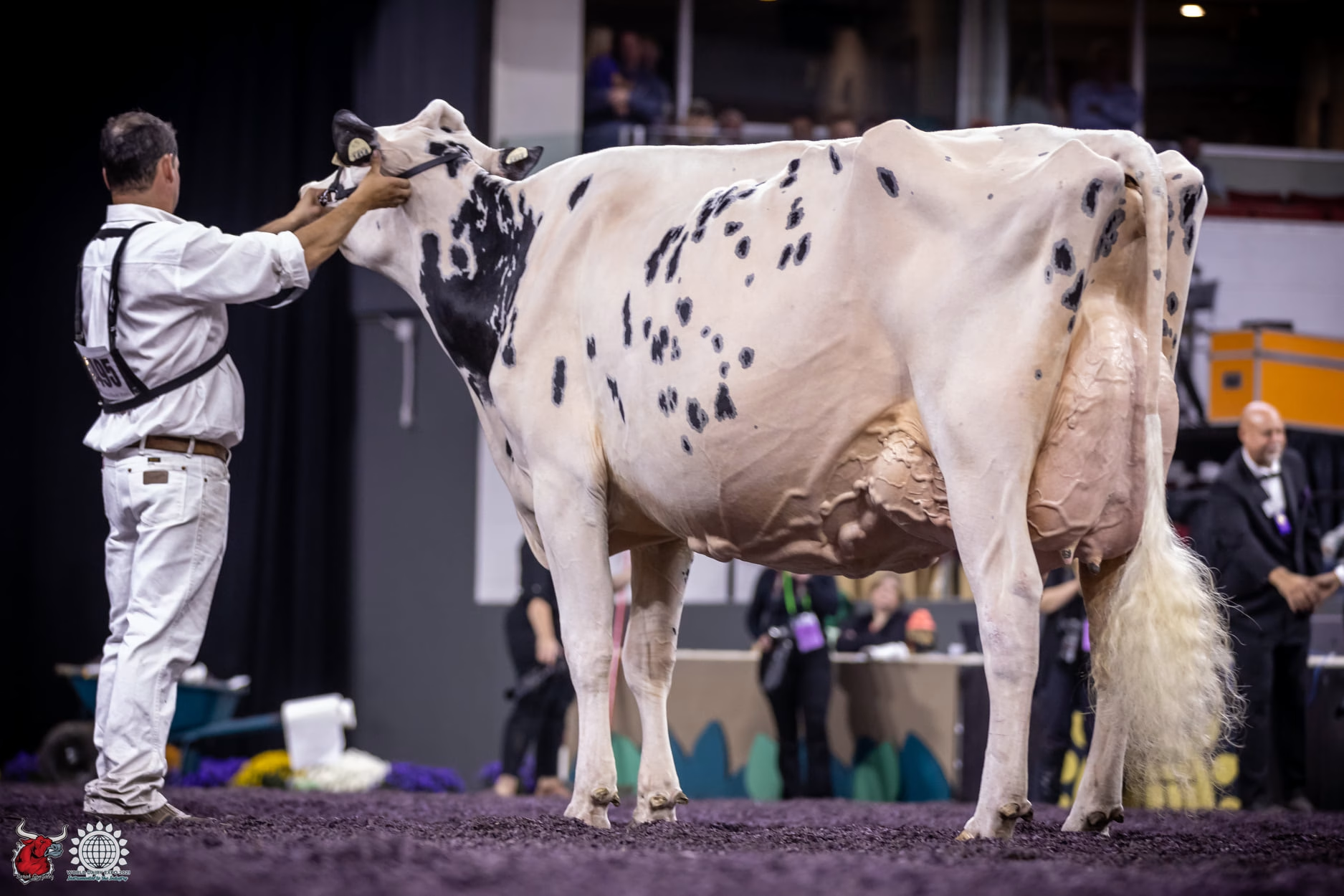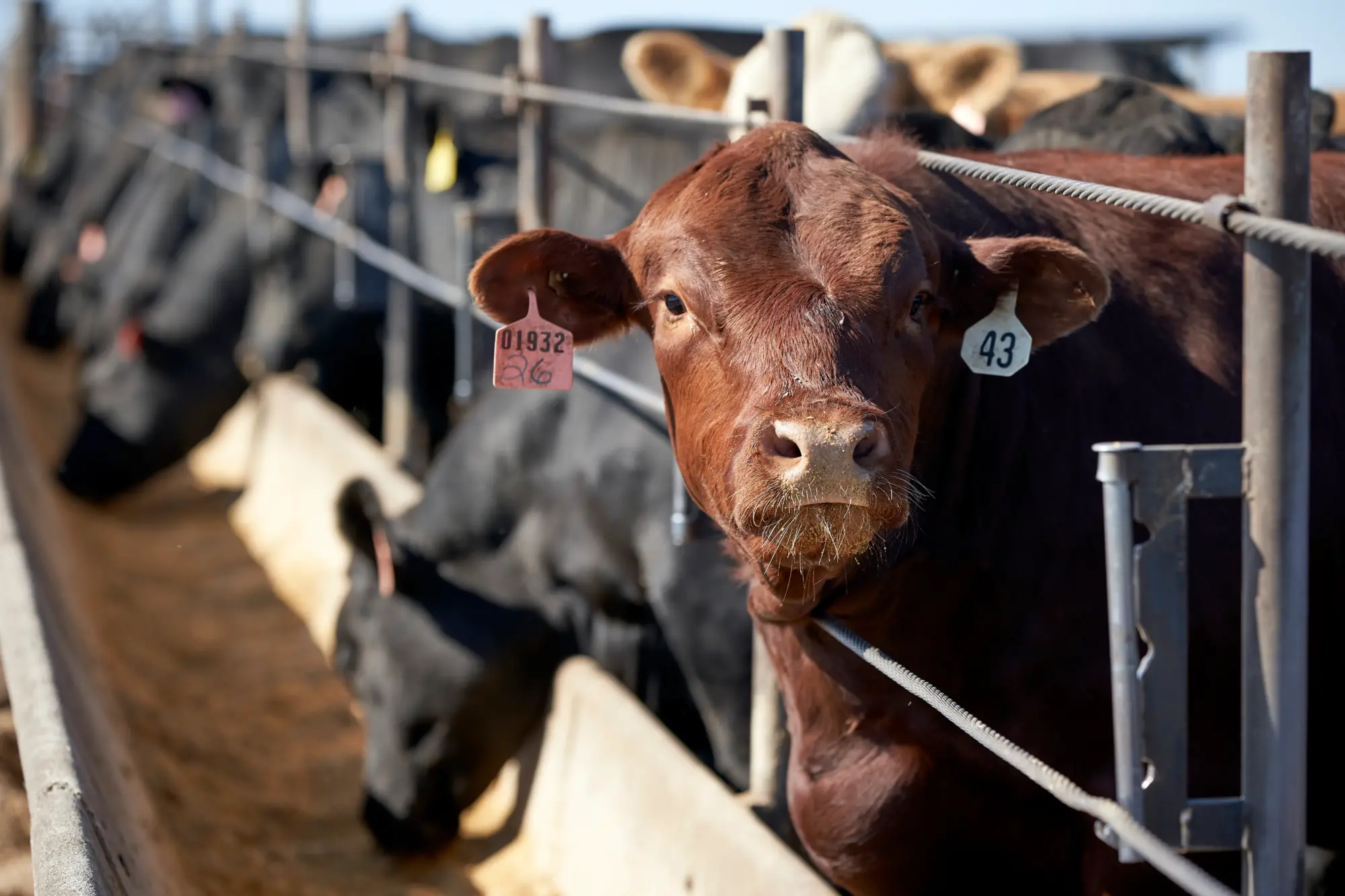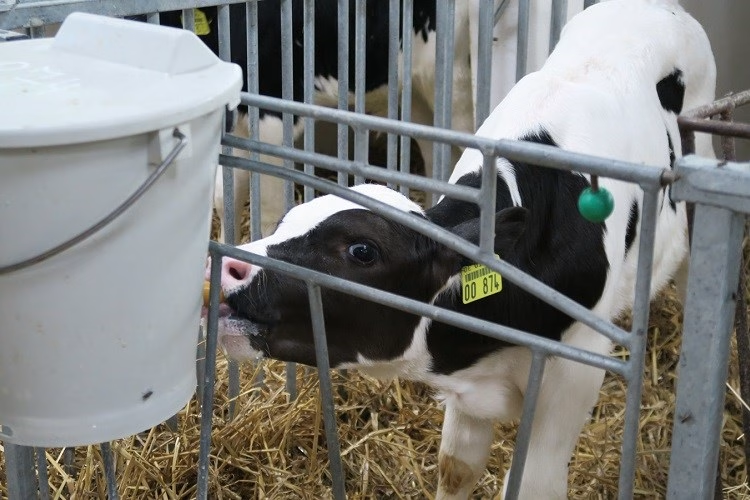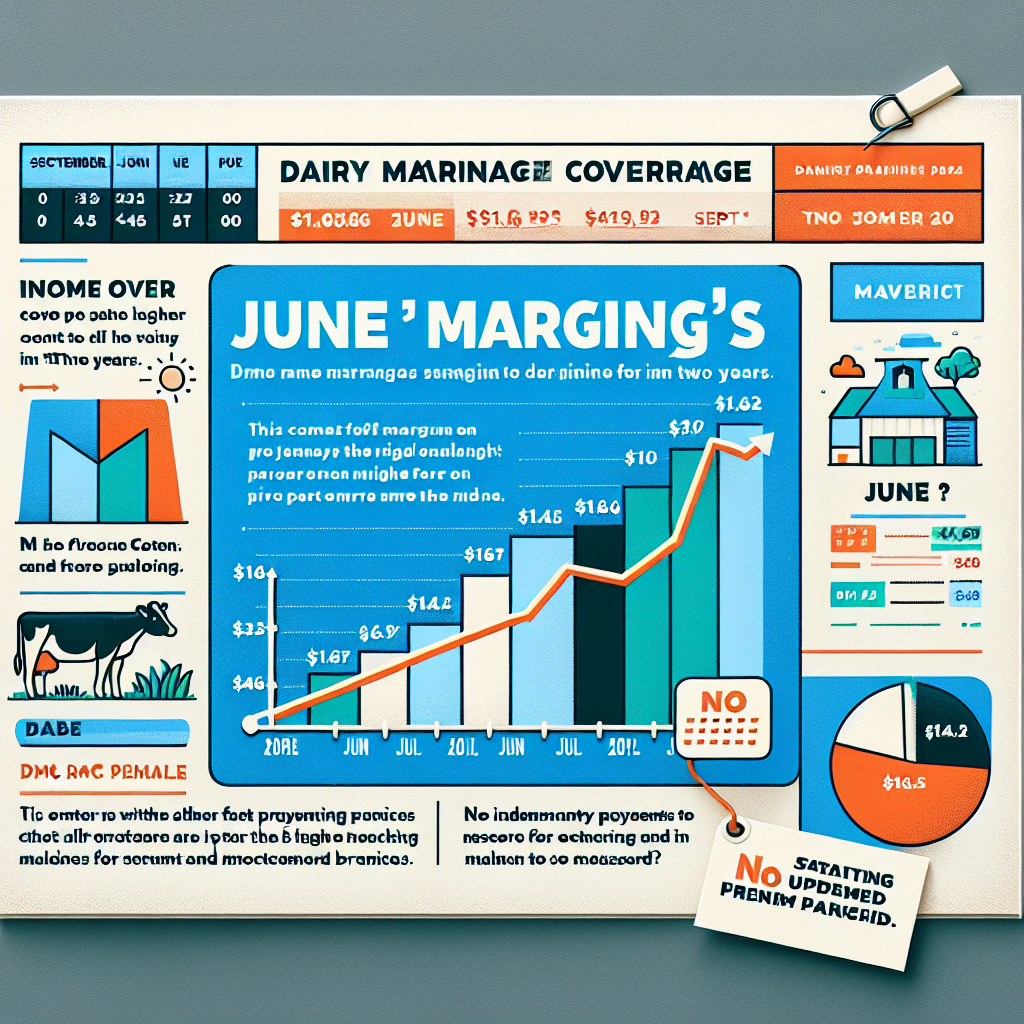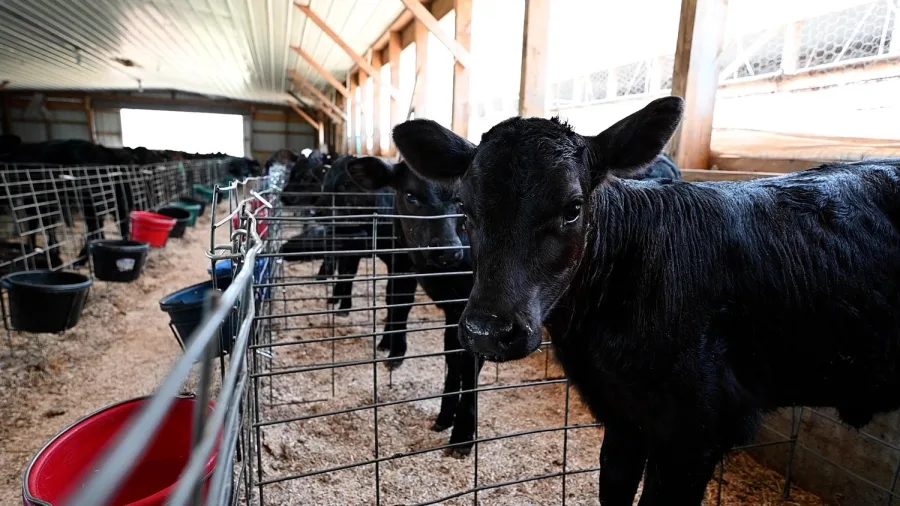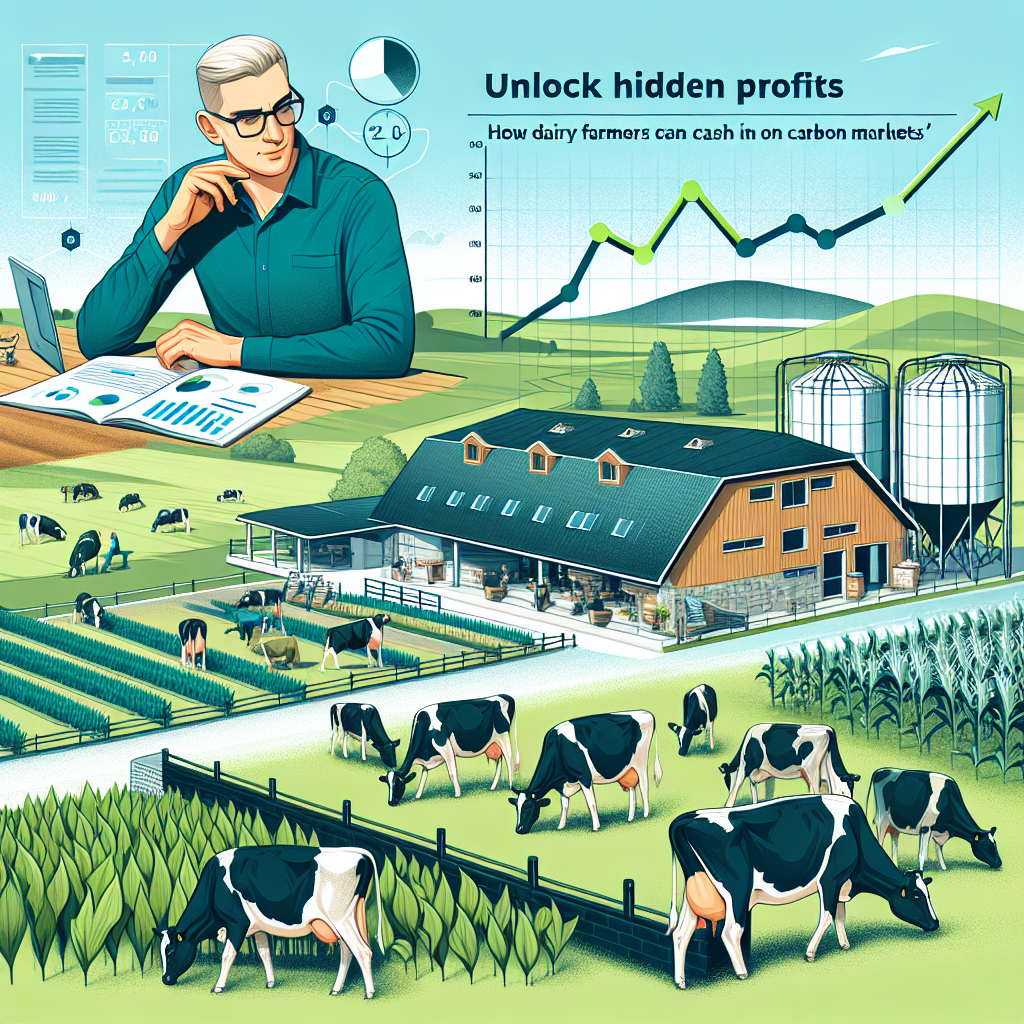Maximize dairy profits with high-quality corn silage. Discover top strategies to boost milk production, enhance nutrient availability, and reduce feed costs. Ready to optimize?
Consider increasing your dairy operation’s profitability by concentrating on a single critical input: high-quality corn silage. This approach maximizes milk output and dairy farm profitability by boosting nutrient availability and lowering feed expenditures. High-quality corn silage may make the difference between straining to fulfill output targets and effectively reaching optimal performance. A 2023 dataset of over 1,800 samples found that high-quality silage contains about 11% more starch, resulting in increased propionate production—a critical volatile fatty acid for milk. Superior silage also enhances dry matter intake, which boosts milk production. Focusing on high-quality corn silage is more than better feed; it may considerably improve your farm’s bottom line. The cost difference between feeding top-tier vs lower-quality silage may be tens of thousands of dollars per year, demonstrating the enormous worth of this approach.
Setting the Stage for Success: The Vital Role of Corn Silage in Dairy Production
Corn silage is more than simply a feed alternative; it is an essential component of dairy farming that plays a crucial role in satisfying the nutritional needs of dairy cows. This high-energy forage, especially for high-producing herds, can substantially impact an operation’s production and profitability, leading to healthier and more productive cows.
The time of corn silage harvest is critical in the dairy calendar. This phase concludes months of agronomic planning, which includes field selection, hybrid selection, and nutrient and weed management strategies. The quality of corn silage gathered today will directly influence the nutritional content of the diet throughout the year, determining milk output and overall dairy profitability.
Properly managed corn silage may improve nutritional availability, fiber digestibility, and starch levels, promoting cow health and milk output. This, in turn, minimizes the demand for additional feeds, cutting total feed expenditures and leading to a more economically and sustainably run dairy farm.
Furthermore, adequately cut and stored corn silage may offer a steady nutrition supply, ensuring constant milk production throughout the winter when fresh forage is scarce. The process from cutting to feeding out involves meticulous care and attention to detail, striving to retain the silage’s nutritional integrity and preserving its value throughout the year.
Concentrating on this critical forage meets immediate nutritional demands while laying a solid basis for next year’s production cycle. Precisely handling each phase, from planting to harvest and storage, can benefit milk output and the dairy operation’s economic sustainability.
Unlocking the Secrets of High-Quality Corn Silage: Insights from 1,800 Samples
Researchers analyzed over 1,800 corn silage samples from the 2023 crop year to identify critical quality indicators distinguishing top-performing silage. Analyzing essential components, including starch, fiber, and fermentation profiles, found considerable differences between high- and low-quality samples. High starch availability in top-tier samples increases propionate formation in the rumen, which is an essential acid for milk production. These better samples also had lower Neutral Detergent Fiber (NDF) and more Undigestible Neutral Detergent Fiber (UNDF240), indicating more excellent fiber digestibility and dry matter ingestion capacity.
The fermentation profiles of high-quality silage show more significant amounts of lactic acid and lower levels of acetic acid, suggesting quicker and more efficient fermentation. Furthermore, reduced ash levels in these samples indicate little soil contamination, lowering the dangers of soil-borne yeasts and clostridial organisms, which may impair fermentation quality. In summary, emphasizing high-quality corn silage improves nutritional availability, milk output, and dairy profitability.
| Nutrient | Average (%) | Top 20% (%) | Bottom 20% (%) |
|---|---|---|---|
| Starch | 31.5 | 39.2 | 28.3 |
| Neutral Detergent Fiber (NDF) | 37.8 | 31.2 | 41.0 |
| Undigestible NDF (UNDF240) | 10.5 | 9.2 | 12.1 |
The Undeniable Economic Impact of High-Quality Corn Silage
The economic benefits of high-quality corn silage are significant and cannot be understated. Using statistics from the 2023 crop year, it becomes clear how substantial the advantages may be. An investigation of more than 1,800 ensiled corn silage samples revealed that the top 20% of silages, as measured by net energy of lactation (NEL), outperformed the lowest 20% in crucial nutritional measures. This enhanced nutritional profile results in immediate economic benefits for dairy farmers, providing a strong return on investment.
Economically, the difference in ration costs between the top and bottom 20% of corn silage samples is significant. Top-quality silages provide nearly 12% more forage in the diet, decreasing the requirement for additional grains like maize—this decrease in supplementary feed results in a cost difference of 24 cents per head per day. Almost a 150-cow dairy corresponds to an annual reduction in concentrate expenses of nearly $76,000.
Furthermore, even if a dairy farm merely buys supplementary protein and minerals, the opportunity cost of feeding high-quality silage rather than selling excess corn adds up to more than $35,000 per year. These numbers highlight the considerable economic benefits of concentrating on growing and using high-quality corn silage in a dairy farm.
High-quality corn silage is a key factor in improving milk output and reducing feed costs, thereby boosting the dairy farm’s profitability. Investing in superior fermentation profiles, increased starch availability, and outstanding fiber digestibility pays off handsomely, demonstrating that concentrating on corn silage is a promising strategy for enhancing your farm’s potential.
The Tangible Benefits of Top-Tier Corn Silage: Nutrient Excellence and Economic Gains
| Criteria | Top 20% Corn Silage | Bottom 20% Corn Silage |
|---|---|---|
| Nutrient Quality | High starch, low NDF, better fermentation profile | Low starch, high NDF, poorer fermentation profile |
| Corn Supplementation | None required | 2.22 kg additional grain corn |
| Forage Utilization (DM) | 12% more forage, 3.4 kg additional DM from forage | Less forage, lower feeding level of on-farm silage |
| Diet Supplementation Cost | Lower concentrate cost | $1.40 increase per head per day |
| Annual Economic Impact (150-cow dairy) | Opportunity cost of selling additional corn: $35,000 | Increased concentrate costs: $76,000 |
Significant disparities in nutritional quality, fermentation profiles, and economic effects appear when comparing the top 20% and bottom 20% of corn silage samples. The top 20% of silages had much greater starch contents, about 11 percentage points more. This is critical for increasing propionate formation in the rumen, which is a necessary volatile fatty acid for milk production. Furthermore, these top-tier silages contain roughly ten percentage points less NDF (Neutral Detergent Fiber) and about three percentage points higher UNDF240 (Undigestible NDF after 240 hours), resulting in higher dry matter intake potential.
Regarding fermentation profiles, the top 20% of corn silages have a better composition, with more lactic acid and less acetic acid. This effective lactic acid generation leads to faster fermentation, which reduces dry matter loss of degradable carbohydrates. In contrast, high acetic acid levels in poorly fermenting silages suggest slower fermentation and more significant losses. Furthermore, the top 20% of samples had lower ash levels, indicating less soil contamination and, therefore, fewer soil-borne yeasts and clostridial organisms, which may have a detrimental influence on fermentation and aerobic stability.
The economic consequences of these inequalities are significant. With increased nutritional quality and better fermentation in the top 20% of silages, diets may contain approximately 12% more forage, equivalent to an extra 3.4 kg of dry matter from forage. This change decreases the additional grain maize required to maintain the same level of milk output by 2.22 kg, resulting in considerable cost savings. The economic difference between the two scenarios is about 24 cents per head per day, with concentrate costs varying by $1.40 per day. For a dairy with 150 cows, this corresponds to an annual savings of more than $76,000 in concentrate expenses alone. Even for farms that produce corn, the opportunity cost of not feeding lower-quality silage might result in an extra $35,000 in potential revenues from selling surplus maize.
Maximizing Dairy Efficiency Through Superior Corn Silage: Economic and Nutritional Advantages
Incorporating high-quality corn silage into dairy diets directly impacts the formulation because it allows for a greater forage inclusion rate, which optimizes forage use. Top-tier corn silage has higher starch and fiber digestibility, so diets may be tailored to maximize forage intake—up to 12% more than lower-quality silage. This enhanced forage inclusion promotes rumen health and minimizes the need for supplementary grains and concentrates. At the same time, high-energy corn silage satisfies nutritional needs.
Practically, using high-quality corn silage minimizes the need for more grain corn. For example, to fulfill the energy needed to produce 40 kg of milk, a diet rich in quality corn silage requires much less grain supplementation. This reduction in grain inclusion frees up room in the diet for additional on-farm silage, improving overall diet quality while lowering expenses. In contrast, lower-quality silage demands more good grain and concentrate supplementation to compensate for nutritional deficiencies, considerably raising feed costs.
Economically, the effect is significant. Superior silage may reduce concentrate costs by about $1.40 per cow per day, demonstrating how concentrating on high-quality silage production can result in substantial financial savings. These savings add up over a year, showing the importance of fodder quality in a dairy farm’s profitability and sustainability.
The Profound Economic Disparities: High-Quality vs. Low-Quality Corn Silage
Economically, there are huge differences between high-quality and low-quality corn silage, which may significantly influence a dairy operation’s profitability. Using the data and comparing situations, we can observe that high-quality corn silage (top 20%) provides more forage in the diet—more than 12% more or an extra 3.4 kg of dry matter (DM). This translates immediately into less dependency on bought cereals and supplements.
For example, a diet containing low-quality silage (bottom 20%) requires an extra 2.22 kilos of grain corn per cow daily to attain comparable rumen-available starch levels. This increased demand for supplements raises feed prices while taking dietary space that might otherwise be supplied with on-farm-generated silage. This forces dairy managers to buy more protein and digestible fiber sources.
Regarding particular economic data, the difference in ration costs is 24 cents per person daily. However, looking at concentrated expenditures reveals more about the financial burden: the cost difference is a staggering $1.40 per person daily. When applied to a 150-cow dairy, the yearly concentration cost disparity exceeds $76,000. Even if the dairy farm plants corn for feed, the opportunity cost of potential earnings from selling the extra grain—assuming high-quality silage is used—is more than $35,000 annually.
The economic conclusions indicate immediate feed cost reductions and potential long-term financial benefits from improved milk production efficiency. As a result, the strategic emphasis on producing and using high-quality corn silage leads to significant economic advantages and increased dairy profitability.
Critical Steps for Harvesting High-Quality Corn Silage: Monitoring Dry Matter, Selecting Inoculants, and Optimizing Cutting Practices
Monitor dry matter (DM) concentration to guarantee high-quality corn silage. The optimal dry matter (DM) ranges from 32% to 38% for silage kept in bunkers and bags and up to 40% for tower silos. Proper moisture testing of the whole plant is required before cutting to meet these standards. Accurately measuring DM helps to ensure an appropriate fermentation.
Next, choosing the proper inoculant is critical for encouraging successful fermentation. To decrease DM loss of soluble carbohydrates, use inoculants with homofermentative bacteria strains, which create lactic acid quickly. Inoculants containing heterofermentative bacteria strains that generate acetic and lactic acids are recommended to improve aerobic stability and lower silage heating during feed out. Select a proven inoculant that meets your company’s unique demands.
Determine the cutting height depending on your silage inventory needs. A standard cut height of 6 to 9 inches is appropriate if all of the grown silage corn is required. For situations needing less silage, greater chopping—up to 24 inches—can boost fiber digestibility and starch content, enhancing overall quality. This method reduces the amount of silage required while increasing nutritional value.
Another important consideration is the cut length. Generally, a chop length of 10 to 22 millimeters is ideal. This range promotes proper digestion and assimilation into the forage diet. Working with a nutritionist is critical for fine-tuning chop length, which depends on total silage volume, chop length of other forages, and particular production goals. Check kernel processing regularly to ensure that there are no whole or half kernels, with a goal of at most two per liter of silage.
The Art of Preservation: Mastering Packing and Covering for Optimal Silage Quality
Proper silage packing and covering are crucial for attaining optimum fermentation and reducing spoiling. Packing silage appropriately guarantees the anaerobic conditions required for the ensiling process. This requires employing enough tractor weight to compress the silage to the necessary density. A general rule of thumb is 400 kilos of packing weight for each tonne of silage ensiled each hour. The idea is to have layers no deeper than 6 inches, allowing for a progressive wedge design. This approach guarantees that oxygen is removed, resulting in good fermentation. Inadequate packing may create oxygen pockets, promoting the development of spoilage organisms like molds and yeasts.
The silage pile must also be well covered. An oxygen barrier followed by an extra plastic layer may minimize oxygen intrusion. The lid is sealed with split tires that contact each other, and sandbags are placed around the perimeter to guarantee minimum air penetration. These strategies reduce aerobic deterioration at the surface and margins of the silage, conserving its quality until it is suitable for use. Producers may pay close attention to these elements to guarantee that their corn silage retains good nutritional quality, increasing milk output and profitability.
The Bottom Line
High-quality corn silage is more than excellent farming; it’s a sound financial decision that may make or break a dairy enterprise. Top-tier corn silage improves milk output while lowering expenses and increasing total profitability. By producing quality corn silage, dairy farmers may enhance feed consumption, minimize the need for additional grains, and improve herd health. Following optimum practices from planting to storage improves dry matter intake, rumen function, and milk production. This harvest season, focus quality over quantity to ensure a profitable year and maximum income. Your herd and bottom line will thank you.
Key Takeaways:
- High-quality corn silage significantly boosts milk production and components by ensuring optimal starch availability, fiber digestibility, and fermentation profiles.
- Poor-quality corn silage can lead to financial losses and difficulties in meeting production goals due to inferior nutrient profiles and fermentation inefficiencies.
- A dataset analysis of over 1,800 corn silage samples from the 2023 crop year highlights the substantial differences in nutritional content and economic impact between top-tier and lower-tier silages.
- The top 20% of corn silage samples exhibit higher starch levels, better fiber digestibility, and superior lactic acid fermentation, contributing to enhanced dry matter intake and milk production.
- Economic benefits of high-quality corn silage include reduced need for supplemental feed, leading to significant cost savings in concentrate usage.
- To achieve high-quality silage, crucial steps include monitoring dry matter content, using research-proven inoculants, optimizing cutting height and chop length, and ensuring adequate packing and covering.
- Attention to detail in the harvest and preservation process sets the foundation for dairy efficiency and profitability in the following year.
Summary:
High-quality corn silage is crucial for dairy farms as it enhances milk output and profitability by increasing nutrient availability and reducing feed expenditures. A 2023 dataset of over 1,800 samples revealed that high-quality silage contains about 11% more starch, leading to increased propionate production and higher dry matter intake. Properly managed corn silage improves nutritional availability, fiber digestibility, and starch levels, promoting cow health and milk output. This minimizes the demand for additional feeds, cutting total feed expenditures and leading to a more economically and sustainably run dairy farm. The top 20% of silages outperform the lowest 20% in crucial nutritional measures. High-quality corn silage is also essential in dairy diets, allowing for greater forage inclusion rate, optimizing forage use, and promoting rumen health. Harvesting high-quality corn silage requires careful monitoring of dry matter concentration, selecting the right inoculant, and optimizing cutting practices.
Learn more:
- Maximizing Corn Silage Quality: Key Decisions for a Productive Dairy Herd
- Adjusting Strategies for Alternative Forages in Dairy Farming: Optimizing Crop Nutrition
- Boosting Dairy Farm Profits: 7 Effective Strategies to Enhance Cash Flow
 Join the Revolution!
Join the Revolution!
Bullvine Daily is your essential e-zine for staying ahead in the dairy industry. With over 30,000 subscribers, we bring you the week’s top news, helping you manage tasks efficiently. Stay informed about milk production, tech adoption, and more, so you can concentrate on your dairy operations.







 Join the Revolution!
Join the Revolution!







